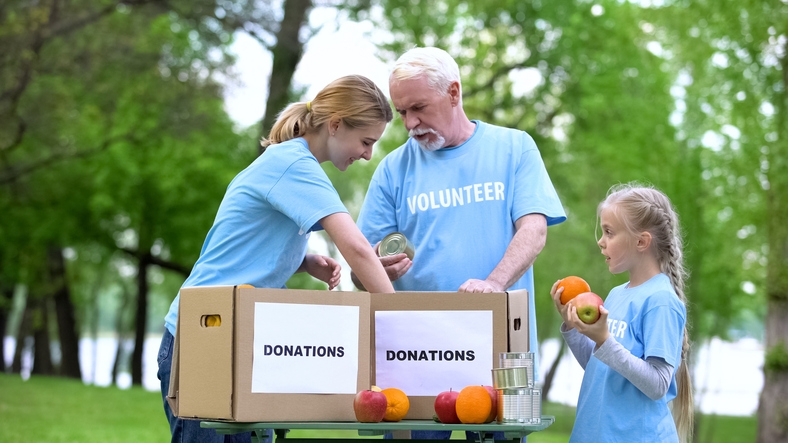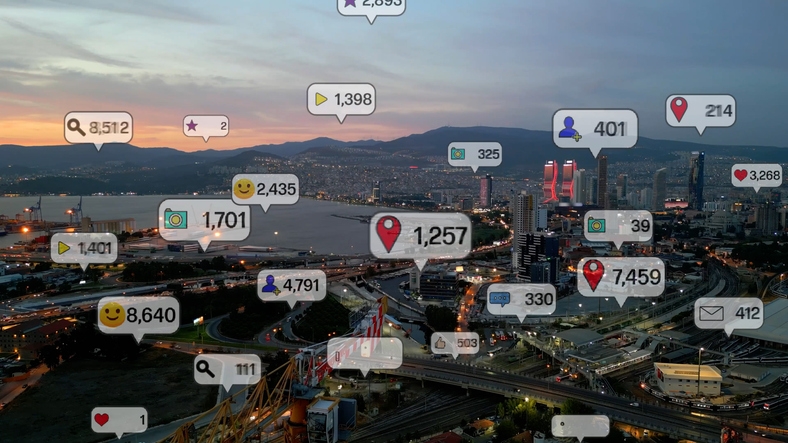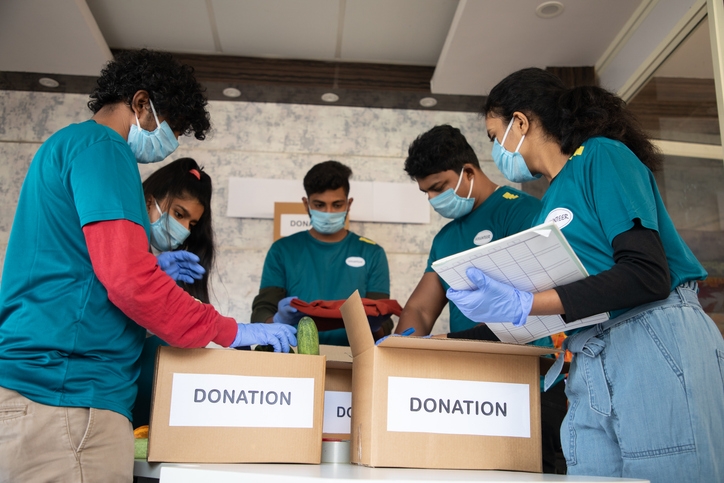Top 10 Charity Event Planning Mistakes That Can Ruin Your Big Day (and How to Avoid Them)
Discover essential best practices for planning charity events that drive successful fundraising. Learn how to make your next event impactful—read more!

Introduction: Why Avoiding Common Pitfalls in Charity Event Planning Matters
Charity event planning isn’t just about managing logistics—it’s about delivering a successful event that leaves a lasting impression, raises awareness, and helps your nonprofit organization achieve its mission. Whether you're organizing a gala, fun run, or auction, even small planning missteps can jeopardize your results.
This article explores the most common pitfalls that can derail your next fundraising event and offers practical, actionable strategies based on charity event planning best practices. With the right approach, your team can avoid unnecessary stress, stay aligned with your goals, and lay the groundwork for a successful fundraiser that strengthens your organization’s impact and community support.
1. Start with a Strategic Plan to Set the Right Course
Why It’s a Problem:
One of the most common planning mistakes is diving into event logistics—like venues and catering—without first developing a strategic plan that ties your fundraising event back to your organization’s core mission. Without direction, your efforts can feel scattered, and you risk missing your desired outcomes.
How to Fix It
- Set clear, measurable, and time-bound objectives
- Example goals: raise $50,000, engage 200 attendees, generate 1,000 new email leads, secure 10 new major donors.
- Ensure your goals are specific to the fundraising ideas you plan to implement.
- Align with your strategic initiatives
- Your next fundraising event should directly support the organization’s current strategic goals—whether that’s to expand outreach, boost recurring donations, or raise awareness for a new program.
- Bring in key stakeholders early
- Get buy-in from board members, staff, volunteers, and donors from the outset.
- Assign ownership for each part of the planning process so nothing falls through the cracks.
- Tie your objectives to your audience
- If your goal is to increase youth outreach, your event should appeal to younger demographics and include relevant fundraising tools and tech.
Example in Action
Your organization is planning to raise $50,000 for a new community center. Your strategic plan should define:
- A clear fundraising goal
- A realistic detailed budget based on past events
- A plan to reach the right audience with the right promotional materials
- Post-event strategies to measure progress and share outcomes
2. Reach the Right Audience for Your Fundraising Events
Why It’s a Problem:
No matter how well-executed your fundraising event is, it won’t succeed if it doesn’t resonate with the right audience. If you're targeting people who aren’t passionate about your mission—or who aren’t inclined to give—you'll struggle to meet your fundraising targets or fill seats at your upcoming event.
How to Fix It
- Analyze your past event data
- Who donated the most?
- Who shared your event or brought friends?
- What social channels or emails drove RSVPs?
- Define your target participant profiles
- Are you reaching:
- Local community members?
- Professionals with a tie to your cause?
- Former beneficiaries or their families?
- Are you reaching:
- Tailor your outreach and messaging
- Customize ticket packages, peer-to-peer fundraising strategies, and social media content to appeal directly to different audience segments.
- Use emotional connection to guide audience targeting
- People give when they feel connected. Craft stories and visuals that highlight the organization’s mission, use testimonials, and show real impact.
- Avoid generic promotion
- Generic “please donate” campaigns rarely work. Customize your invites, CTAs, and promotional materials to each group.
Pro Tip:
The right audience is more than attendees—they’re advocates. These are the people who:
- Share your campaign online
- Donate again after the event
- Recruit others for your next event
- Become long-term supporters of your organization
Example in Action
Hosting a gala to support cancer research? Your top audience segments might be:
- Healthcare professionals
- Families of cancer survivors
- Local wellness business owners
Create specific messaging and sponsorship packages just for them.

3. Choose the Right Date, Time, and Venue for Maximum Attendance
Why It’s a Problem:
A well-planned fundraising event can fail simply because it was held at the wrong time or in an unsuitable space. Your venue and event timing must support your strategic goals and appeal to your target audience—not conflict with them.
How to Fix It
- Choose a date that works for your community
- Avoid:
- National or religious holidays
- Major local events (sports finals, festivals)
- Exam or school break periods
- Avoid:
- Be audience-centric when picking time
- Corporate audience? Evenings or workday lunches.
- Families? Weekends or early evenings.
- Select a venue that fits your event’s purpose
- Large fundraising gala? Look for elegant, seated venues.
- Family-friendly walkathon? Choose an open, outdoor park.
- Tech-enabled panel event? Ensure strong Wi-Fi, screens, A/V.
- Factor in accessibility and convenience
- Ample parking, public transit access, ADA compliance—all matter for turnout.
Best Practices
- Align your venue choice with your strategic initiatives
- Confirm venue availability early in your planning process
- Always tour the space in advance to avoid surprises on event day
4. Build a Realistic Budget and Allocate Resources Wisely
Why It’s a Problem:
Failing to manage money and resources effectively is a fast track to a chaotic, underfunded event. A detailed budget helps you prioritize spending, identify in-kind support opportunities, and avoid surprises.
How to Fix It
- Build your budget during strategic planning
- Base it on fundraising event planning best practices
- Use past data from similar fundraising events to forecast accurately
- Allocate resources based on impact—not just tradition
- Use digital fundraising tools to track and adjust
- Excel, Google Sheets, or tools like BudgetNook or Bloomerang
- Include projections for both expenses and income
- Include all the features that matter
- Don’t forget these common budget busters:
- Signage & branding
- Tech setup (mics, livestream, lighting)
- Staff meals and water
- Decorations and licenses
- Don’t forget these common budget busters:
- Account for corporate sponsors and in-kind donations
- They can cover entertainment, giveaways, food, and venue rentals
- Track both cash and non-cash support
Pro Tip:
Add a 10% buffer to your event budget to handle unexpected expenses.
5. Recruit and Train Volunteers for a Smooth Big Day
Why It’s a Problem:
Your volunteers are essential to event operations and guest experience. When nonprofits fail to recruit volunteers early—or forget to train them—they risk disorganized check-ins, donor confusion, and poor impressions on the big day.
How to Fix It
- Define clear volunteer roles early
- Registration desk
- Setup & teardown
- Donor support
- Activity/crowd coordination
- Social media/documentation
- Use simple tools to manage assignments
- Google Sheets, Trello, or platforms like SignUpGenius
- Assign ownership for each shift or responsibility
- Train your volunteers—even briefly
- Provide:
- A one-pager with instructions
- A quick walk-through before doors open
- Emergency protocols & FAQ answers
- Provide:
- Make it worth their while
- Volunteers are more likely to return (or donate!) if they feel valued.
Best Practices
- Send handwritten notes or thank-you emails after the fundraiser
- Publicly acknowledge your volunteer teams on social media
- Invite them to your next event as VIP supporters
6. Promote Smart: Drive Awareness and Engagement Before the Big Day
Even the most impactful charity event will fall flat if community members don’t know it’s happening. A weak promotion strategy results in poor turnout, missed fundraising goals, and wasted planning efforts.
How to Fix It
- Promote early and often
- Begin 6–8 weeks in advance with a save-the-date and registration page
- Make sure the event’s date and time are clear and easy to find
- Use the right channels for your audience
- Social media (Instagram, Facebook, LinkedIn)
- Email campaigns with compelling subject lines
- Posters or flyers at local community events
- Collaborate with community partners
- Schools, faith groups, local influencers, and small businesses can help amplify your reach
- Offer additional resources like digital flyers or caption templates for easy sharing
- Build pre-event engagement
- Encourage peer-to-peer fundraising by empowering registrants to fundraise with their own circles
- Include a “Join Our Team” button on your registration page to build group excitement
Pro Tip:
Provide short scripts or sample social posts people can use to promote on your behalf—remove barriers to sharing.

7. Offer Multiple Fundraising Ideas to Boost Revenue
Why It’s a Problem:
Limiting your event to just ticket sales can cap your revenue. Offering only one way to give excludes those who want to support in other ways or at different levels.
How to Fix It
- Diversify your fundraising opportunities
- Add silent auctions, raffles, donation stations, and live fundraising appeals
- Offer text-to-donate and QR codes for mobile giving
- Include digital giving options for remote supporters
- Not everyone can attend your event in person—but they may still want to contribute
- Make it easy with donation buttons, registration page add-ons, or sponsorship packages
- Create emotional giving moments
- Incorporate compelling stories that demonstrate your event’s purpose and impact
- Use visual storytelling—photos, videos, or live testimonials from beneficiaries
- Encourage friendly competition
- Set up fundraising “teams” and show real-time progress toward shared goals
- This taps into gamification and drives higher engagement
Pro Tip:
Use fundraising tools that let you create dynamic leaderboards or instant donation pop-ups during your program.
8. Measure Progress to Improve Future Events
Why It’s a Problem:
If you’re only measuring dollars raised, you’re missing valuable data. Tracking engagement, attendance, and donor retention helps determine how successful your fundraising event truly was—and how to improve your event management next time.
How to Fix It
- Monitor key performance areas throughout the process
- Don’t wait until the end. Track metrics throughout your planning and execution phases
- Use data to improve your next event
- Measure more than money:
- Registrations vs. check-ins (use your registration page data)
- Social media reach and engagement
- Donor and volunteer satisfaction
- Attendance compared to date and time expectations
- Measure more than money:
- Survey your audience
- Send a short post-event feedback form to attendees, volunteers, and major donors
- Include questions that help you determine what worked and what didn’t
- Assign team members clear roles in evaluation
- Who tracks social metrics? Who manages donor data? Define clear roles and timelines post-event
- Use results to support future grants or partnerships
- Share event success metrics with corporate sponsors and community partners
- Package learnings as part of your long-term fundraising course or strategy
Key Metrics to Track
- New donor count
- Social media engagement (shares, comments, reach)
- Ticket or sponsorship packages sold
- Volunteer hours completed
- Donor retention rate within 3–6 months
- On-site and digital fundraising totals
9. Follow Up to Strengthen Donor Relationships
Why It’s a Problem:
Your charity event isn’t truly over when attendees go home. Failing to follow up means you lose momentum, donor goodwill, and future engagement opportunities. Relationships—not one-time transactions—are what sustain nonprofits.
How to Fix It
- Thank your supporters promptly
- Send thank-you emails or handwritten notes within 24–48 hours
- Personalize messages where possible, especially for high-impact donors or volunteers
- Share event highlights
- Post photos, short videos, and testimonials on your registration page or social media
- Tag attendees and volunteers (with permission) to increase visibility and reach
- Provide next steps
- Invite attendees to upcoming initiatives, campaigns, or your next fundraising course
- Let them know how their contribution is helping you reach your larger goals
- Include additional resources for ongoing involvement
- Volunteer sign-up forms
- Newsletter opt-ins
- A donor impact report or project update
- Assign clear roles for follow-up
- Determine who on your team is responsible for thank-you emails, social content, and re-engagement efforts
Pro Tip:
Make follow-up feel like a continuation of the event—not a formality. Tie back to your mission and the emotional impact of the event.
10. Use the Right Fundraising Tools for Efficient Event Management
Why It’s a Problem:
Trying to manually handle every part of a charity event—ticketing, tracking, promotion, volunteer coordination—leads to burnout, missed details, and inefficiencies. The right technology doesn’t just save time; it boosts your impact.
How to Fix It
- Choose all-in-one event management tools
- Use software designed for nonprofits that includes:
- Ticketing & registration pages
- Volunteer & team management
- Budget tracking & communications tools
- Use software designed for nonprofits that includes:
- Automate repetitive tasks
- Confirmations, reminder emails, donation receipts, and event updates can all be automated to save hours of work
- Invest in scalable solutions
- Choose platforms that grow with your team and can be customized for small or large events
- Track everything in one place
- Use tools that help you determine success metrics like:
- Attendee check-in rate
- Donation trends by ticket type
- Volunteer hour tracking
- Date and time-based performance (e.g., early-bird vs last-minute signups)
- Use tools that help you determine success metrics like:
- Give team members clear access and permissions
- Assign clear roles within your software to reduce confusion and increase accountability
Pro Tip:
Before committing to a tool, take a free course or demo to make sure it meets your nonprofit’s event-specific needs.

Conclusion: Turn Every Fundraising Event Into a Lasting Success
Every nonprofit event should start with clear intentions and end with measurable impact. Whether you're planning a gala, walkathon, benefit concert, or silent auction, the most successful events aren’t just the ones that raise the most money—they’re the ones that move your mission forward.
By avoiding the most common mistakes and following charity event planning best practices, your organization can build stronger strategic plans, engage the right participants, and attract new donors who care about your cause.
Remember: every event is an opportunity to share your word, inspire action, and bring your community one step closer to the change you're working to create.
Keep learning, keep optimizing and make your next nonprofit event your most impactful one yet.
Let me know if you’d like this added to the full blog draft or if you’d like a custom call-to-action (CTA) tailored to Azavista or a downloadable resource (like a checklist or template).
More Event Marketing and Promotion












